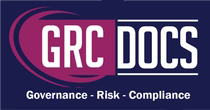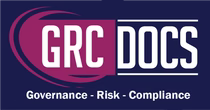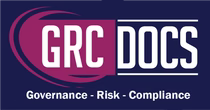EU AI Act Annex XI: Technical Documentation Referred To In Article 53(1), Point (a) - Technical Documentation For Providers Of General-Purpose AI Models
Introduction
As artificial intelligence continues to evolve, transparency, safety, and accountability have become central to EU policy. The EU Artificial Intelligence Act (AI Act) - the world’s first comprehensive AI regulation enforces structured rules to ensure responsible AI development and deployment. One of the most critical components for AI developers and providers is Annex XI, which sets out the technical documentation requirements referred to in Article 53(1)(a). This annex applies specifically to providers of General-Purpose AI Models (GPAI) models that can be integrated into countless downstream applications.

Annex XI: Technical Documentation In Article 53(1)
Annex XI of the AI Act is a crucial component for providers of general-purpose AI models. It outlines the technical documentation requirements that ensure transparency, accountability, and compliance with EU regulations. By mandating comprehensive documentation, Annex XI aims to enhance the clarity and understanding of AI systems, facilitating better regulatory oversight and promoting public trust.
Purpose Of Technical Documentation
The technical documentation serves multiple and significant purposes:
-
Transparency: It provides detailed insights into how AI models function and make decisions, fostering trust among users and stakeholders. This transparency is essential for demystifying complex AI processes and facilitating informed decision-making by users.
-
Accountability: Detailed documentation enables authorities to assess compliance with the AI Act, ensuring that AI systems operate within legal boundaries. By holding providers accountable, the documentation acts as a safeguard against potential misuse of AI technologies.
-
Compliance: By adhering to the documentation standards, providers demonstrate their commitment to ethical AI development, aligning their operations with the broader objectives of the EU AI Act. This compliance not only fulfills legal obligations but also enhances the provider's reputation and credibility in the market.
Core Components Of Technical Documentation In Article 53(1)
Annex XI specifies several key components that must be included in the technical documentation for general-purpose AI models, ensuring a comprehensive understanding of the system:
-
System Overview: A comprehensive description of the AI system, including its intended purpose, functionalities, and limitations. This overview provides a foundational understanding of the system's design and objectives, serving as a reference point for further analysis.
-
Design Specifications: Detailed information about the system's architecture, algorithms, and data sources used for training and testing. This component delves into the technical intricacies of the model, offering insights into its structural and operational framework.
-
Risk Assessment: An analysis of potential risks associated with the AI model, including ethical and societal impacts. This assessment evaluates the broader implications of the model's deployment, considering factors such as bias, discrimination, and societal disruption.
-
Compliance Measures: Documentation of measures taken to ensure compliance with EU regulations, such as data protection and bias mitigation strategies. This section outlines the steps taken to align the model with regulatory standards, emphasizing the importance of ethical and responsible AI development.
-
Performance Metrics: Metrics and benchmarks used to evaluate the system's performance, including accuracy, reliability, and robustness. These metrics provide an objective basis for assessing the model's efficacy and identifying areas for improvement.
Importance Of Compliance
For providers of general-purpose AI models, compliance with Annex XI is not just a legal obligation but a competitive advantage. By demonstrating transparency and accountability, companies can enhance their reputation and build trust with consumers and partners. Compliance also signals a commitment to ethical business practices, differentiating providers in a competitive market landscape. By adhering to the rigorous documentation standards set forth in Annex XI, providers can position themselves as leaders in responsible AI development, gaining a foothold in the evolving European AI ecosystem.
Challenges And Opportunities
While the technical documentation requirements outlined in Annex XI present certain challenges, they also offer opportunities for innovation and growth. Navigating these challenges effectively can lead to significant competitive advantages in the burgeoning AI market.
Challenges
-
Complexity: Creating comprehensive documentation for sophisticated AI models can be resource-intensive and time-consuming. The complexity of AI systems necessitates a detailed understanding of their functionalities and potential risks, requiring significant expertise and effort.
-
Dynamic Nature: AI models often evolve rapidly, necessitating regular updates to documentation to reflect changes in functionalities or risk assessments. This dynamic nature of AI development poses challenges in maintaining accurate and up-to-date documentation, requiring ongoing monitoring and revision.
Opportunities
-
Innovation: By adhering to rigorous documentation standards, providers can identify areas for improvement and innovation within their AI models. This process of continuous evaluation and refinement can lead to the development of more robust and effective AI solutions.
-
Market Access: Compliance with the EU AI Act opens doors to the European market, providing access to a large and diverse consumer base. This expanded market access offers significant growth opportunities for providers, enabling them to reach new customers and explore untapped markets.
Best Practices For Compliance
To effectively meet the technical documentation requirements of Annex XI, providers should consider the following best practices. These strategies can help streamline compliance efforts and ensure that documentation is comprehensive and up-to-date.
1. Establish a Dedicated Compliance Team- Form a team responsible for overseeing compliance with the AI Act, including the preparation and maintenance of technical documentation. This team should consist of experts from various fields, including legal, technical, and ethical domains, to ensure a holistic approach to compliance.
2. Leverage Automation Tools- Utilize automation tools to streamline the documentation process, ensuring accuracy and efficiency in capturing system details and updates. Automation can significantly reduce the time and effort required for documentation, enabling providers to focus on innovation and improvement.
3. Engage with Stakeholders- Collaborate with stakeholders, including legal experts, data scientists, and ethicists, to ensure comprehensive documentation that addresses all aspects of compliance. Engaging with a diverse range of stakeholders can provide valuable insights and perspectives, enhancing the quality and relevance of the documentation.
Why Annex XI Matters For AI Developers And Providers?
For developers and organizations, Annex XI is not just a legal formality — it’s a trust-building framework.
Here’s why it matters:
-
Transparency & Trust: It promotes openness about how models are built, trained, and deployed — a cornerstone of trustworthy AI.
-
Risk Mitigation: By documenting datasets, biases, and evaluation results, providers can proactively identify and mitigate risks.
-
Regulatory Compliance: Without Annex XI documentation, a provider cannot demonstrate compliance under Article 53 — which could lead to enforcement actions or market bans.
-
Downstream Integration: Well-structured documentation supports developers who integrate GPAI models into their own AI systems, ensuring traceability and responsible deployment.
-
Sustainability & Accountability: Recording energy consumption and computational resources aligns with the EU’s environmental and ethical AI objectives.
Conclusion
Annex XI of the EU AI Act plays a pivotal role in shaping the future of AI development in Europe. By adhering to the technical documentation requirements, providers of general-purpose AI models can demonstrate their commitment to ethical and responsible AI deployment. While challenges exist, the opportunities for innovation and market expansion are significant. By embracing transparency, accountability, and compliance, AI providers can contribute to a trustworthy and sustainable AI ecosystem in the EU. The EU AI Act, particularly Annex XI, is a vital instrument in ensuring that AI technologies are developed and used in a manner that aligns with European values and standards. Providers of general-purpose AI models must prioritize technical documentation to meet these requirements and unlock the full potential of AI in the European market.




